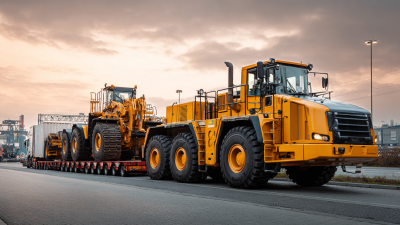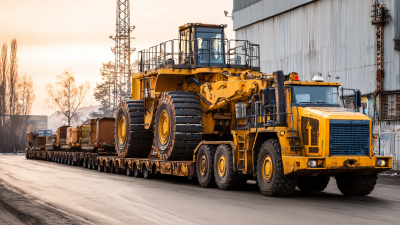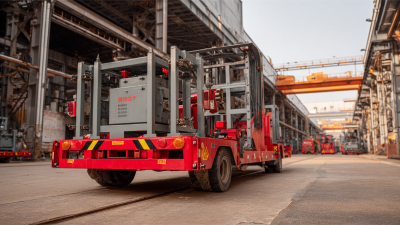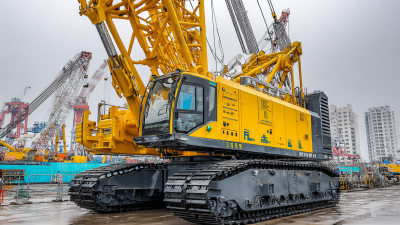Leave Your Message
-
Phone
-
E-mail
-
Whatsapp
In the realm of logistics, Heavy Machinery Transport stands out as a complex yet crucial segment that requires meticulous planning and innovative solutions. The challenges associated with transporting large and heavy equipment are multi-faceted, often involving intricate routes, specialized vehicles, and stringent regulations. As industries evolve and demand for heavy machinery rises, addressing these challenges becomes imperative.

Innovations in technology, such as real-time tracking, automated logistics systems, and enhanced safety measures, are transforming the way heavy machinery is transported. This article will delve into the various obstacles faced by logistics providers in this field while also highlighting effective strategies and technological advancements that contribute to a more efficient and reliable Heavy Machinery Transport process. By understanding these dynamics, businesses can better navigate the complexities of transporting heavy equipment in today's fast-paced environment.
Innovative technologies are at the forefront of transforming heavy machinery transport, addressing the unique challenges faced in this sector. With the increasing scale and complexity of heavy machinery, solutions that enhance efficiency and safety are crucial. Advances in automation and telematics are enabling more precise logistics management, allowing for real-time tracking and predictive maintenance. Additionally, the use of electric and hybrid vehicles is minimizing the environmental impact of heavy machinery transport, aligning with global sustainability goals.
The role of emerging markets, particularly in Asia, is also pivotal in reshaping the future of heavy machinery transport. With significant investments in infrastructure and a growing demand for innovative solutions, countries like China are leading the charge. Events such as the recent heavy machinery equipment exhibition in Zhengzhou illustrate the industry's commitment to showcasing cutting-edge technologies. This proactive approach not only enhances operational capabilities but also fosters collaboration among industry stakeholders to drive further innovation in heavy machinery transport.
The transport of heavy machinery presents a unique set of challenges that can significantly impact project timelines and costs. One of the primary difficulties is the sheer size and weight of the equipment, which often requires specialized transport vehicles and permits. Additionally, navigating through urban areas can be problematic due to restrictions on large vehicles, road weight limits, and the need for traffic control measures. These logistical complexities necessitate thorough planning and coordination to ensure the safe and efficient movement of machinery.

Another significant challenge is the risk of damage during transport. Heavy equipment is often sensitive and can be adversely affected by vibrations, improper loading, or adverse weather conditions. Transport companies must implement effective securing and cushioning techniques to mitigate these risks. Moreover, the varying terrain and potential obstacles during transit can lead to further complications, demanding that operators remain vigilant and flexible in their approach. The combination of these challenges underscores the importance of expertise and innovation in the heavy machinery transport sector.
The logistics industry is undergoing a transformative phase fueled by digital innovations that enhance efficiency and streamline operations. The integration of digital solutions into heavy machinery transport focuses on leveraging technologies such as real-time visibility systems, AI for demand forecasting, and automated warehousing. By adopting digital logistics, companies can significantly improve their transportation and warehousing services, catering to the increasing demands of various sectors, including e-commerce and manufacturing.
Moreover, the emergence of smart warehousing solutions like automated storage and retrieval systems, drones for inventory management, and robotic sorting systems underscores the shift towards a more automated and interconnected approach to logistics. These innovations are not only reshaping the way goods are transported and stored but also driving the market's growth, with significant investments anticipated over the next decade. As companies embrace the "Internet Plus" approach and align with national strategies like "Made in China 2025," the logistics landscape is set to evolve, improving service delivery and operational efficiencies across the board.
The heavy machinery transport sector is experiencing a significant transformation as it embraces sustainability practices, driven by the increasing need for eco-friendly solutions amid a changing global landscape. One of the notable trends is the integration of renewable energy sources, which supports the industry's shift away from fossil fuels. As infrastructure development accelerates, the demand for oversized cargo transportation is expected to surge, projected to grow from USD 194.6 billion in 2025 to USD 311.7 billion by 2034. This growth is not only a testament to robust economic activity but also hints at an industry increasingly focused on reducing its carbon footprint.
Advancements in technology, particularly the application of AI and automation, are revolutionizing the transport of heavy machinery, ensuring higher precision and enhanced safety. These innovations complement sustainability efforts by optimizing transport routes and reducing emissions. For instance, the adoption of electric vehicles for cargo transport is not just a trend but a necessary step toward achieving net-zero goals. Such practices align with broader environmental strategies, underscoring the importance of sustainable logistics in the heavy machinery transport arena. The intersection of sustainability and technology is paving the way for a greener future, making heavy machinery transport more efficient and environmentally responsible.
| Dimension | Description | Current Trends | Sustainability Practices |
|---|---|---|---|
| Logistics Efficiency | Maximizing the transport of heavy machinery with minimal resources. | Use of data analytics for route optimization. | Implementing eco-friendly packaging solutions. |
| Regulatory Compliance | Adhering to legal requirements for heavy machinery transport. | Greater emphasis on safety and environmental regulations. | Utilizing electric or alternative fuel vehicles. |
| Technological Innovations | Adopting new technologies to improve transport efficiency. | Rise of automation and telematics in logistics. | Using drones for aerial inspections and monitoring. |
| Cost Management | Managing expenses to ensure profitability in machinery transport. | Adoption of shared transport models. | Investing in energy-efficient transport options. |
| Collaborative Networks | Partnerships among companies for logistics solutions. | Increased collaboration within supply chains. | Sharing best practices in sustainability among partners. |
Innovations in heavy machinery transport have significantly enhanced efficiency and safety within the industry. One notable case study is the implementation of specialized modular transportation systems that allow oversized equipment to be moved with unprecedented precision. Companies like Mammoet have pioneered the use of modular transporters that can be configured to accommodate varying dimensions and weights, reducing the time and risk associated with moving heavy machinery across challenging terrains.
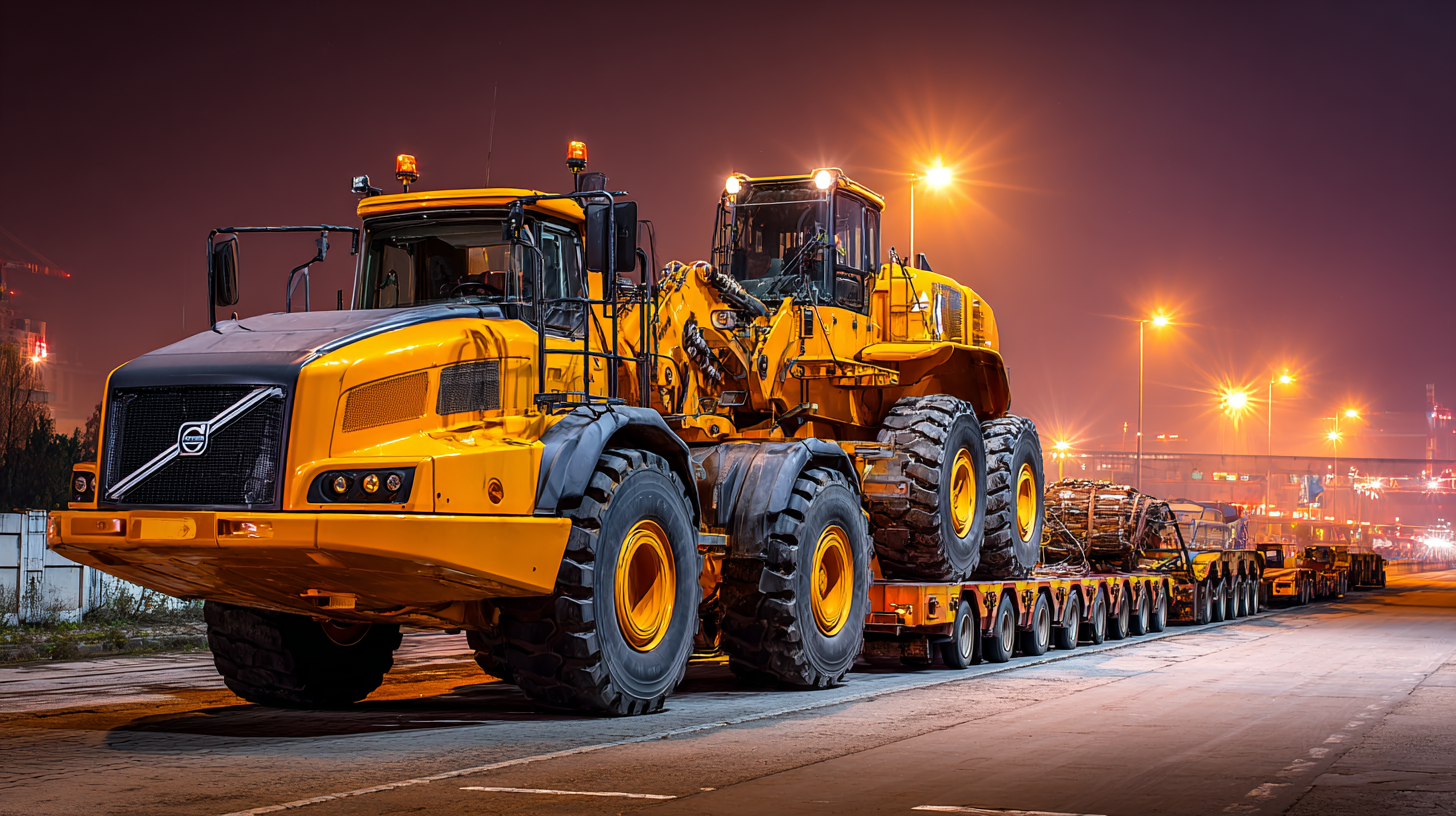
Another impressive innovation is the integration of real-time tracking technologies. Firms such as ALE utilize GPS and IoT devices to monitor the movement of heavy machinery throughout the transport process. This technology not only ensures timely deliveries but also enhances the ability to respond to potential issues, such as traffic disruptions or equipment malfunctions. By employing these smart tracking systems, businesses can optimize their logistical operations and minimize downtime while ensuring the security of valuable machinery during transit.
